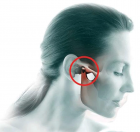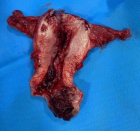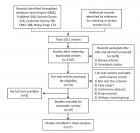Abstract
Research Article
The Effects of Interval and Traditional Resistance Exercise on Hormonal Control of Adipose-tissue Lipolysis in Healthy Young Men
Minoo Bassami*, Bahareh Taghipour, Rasul Eslami, Ali Nejatian Hoseinpour, Kallie Dawkins, Saiful Singar and Bahram H Arjmandi*
Published: 11 July, 2024 | Volume 9 - Issue 1 | Pages: 021-026
Purpose: Lipolysis is regulated by lipolytic hormones, like insulin, cortisol, growth Hormone (GH), and catecholamines. Unregulated lipolysis results in the accumulation of free fatty acids (FFAs), leading to dysfunction of cells and death. Thus, the main aim of this study was to determine the effects of interval and traditional resistance exercise on hormonal control of adipose-tissue lipolysis in healthy young men.
Methods: Twelve healthy males (Mean ± SD; age, 25.5 ± 3.1 years; Body mass index, 24.2 ± 2.0 kg/m2) performed tradition resistance exercise (TRE) at 80% of 1RM (3 sets of 6 repetitions) with 2 min passive recovery, and an interval resistance exercise (IRE) trial at 60% of 1RM (3 sets of 6 repetitions) followed by active recovery (1 set of 6 repetitions at 20% of 1RM). Three blood samples were taken before and immediately after exercise, and after one-hour recovery and were analyzed to measure epinephrine, norepinephrine, cortisol, and GH.
Results: Statistical analyses of the data revealed that concentrations of cortisol and GH increased in response to resistance exercise and significantly decreased (p < 0.05) during the recovery period. Although there were no significant differences between the two protocols for cortisol concentration, GH increases following IRE were profoundly higher than TRE protocol. Epinephrine and norepinephrine increased (p < 0.05) in response to both resistance exercise trials, though, no between-group differences were found for these variables.
Conclusion: The results of our study showed increases in GH, cortisol, epinephrine, and norepinephrine in two resistance exercise protocols which may lead to increases in fat oxidation.
Read Full Article HTML DOI: 10.29328/journal.jcicm.1001049 Cite this Article Read Full Article PDF
Keywords:
Lipolysis; Hormonal control; Fat oxidation; Interval resistance exercise; Norepinephrine; Epinephrine
References
- Frayn KN, Karpe F, Fielding BA, Macdonald IA, Coppack SW. Integrative physiology of human adipose tissue. Int J Obes Relat Metab Disord. 2003;27(8):875-888. Available from: https://pubmed.ncbi.nlm.nih.gov/12861227/
- Large V, Peroni O, Letexier D, Ray H, Beylot M. Metabolism of lipids in human white adipocyte. Diabetes Metab. 2004;30(4):294-309. Available from: https://pubmed.ncbi.nlm.nih.gov/15525872/
- Zimmermann R, Strauss JG, Haemmerle G, Schoiswohl G, Birner-Gruenberger R, Riederer M, et al. Fat mobilization in adipose tissue is promoted by adipose triglyceride lipase. Science. 2004;306(5700):1383-1386. Available from: https://pubmed.ncbi.nlm.nih.gov/15550674/
- Bartness TJ, Liu Y, Shrestha YB, Ryu V. Neural innervation of white adipose tissue and the control of lipolysis. Front Neuroendocrinol. 2014;35(4):473-493. Available from: https://pubmed.ncbi.nlm.nih.gov/24736043/
- Duncan RE, Ahmadian M, Jaworski K, Sarkadi-Nagy E, Sul HS. Regulation of lipolysis in adipocytes. Annu Rev Nutr. 2007;27:79-101. Available from: https://pubmed.ncbi.nlm.nih.gov/17313320/
- Kitamura T, Kitamura Y, Kuroda S, Hino Y, Ando M, et al. Insulin-induced phosphorylation and activation of cyclic nucleotide phosphodiesterase 3B by the serine-threonine kinase Akt. Mol Cell Biol. 1999;19(9):6286-6296. Available from: https://pubmed.ncbi.nlm.nih.gov/10454575/
- Strålfors P, Honnor RC. Insulin-induced dephosphorylation of hormone-sensitive lipase. Correlation with lipolysis and cAMP-dependent protein kinase activity. Eur J Biochem. 1989;182(2):379-385. Available from: https://pubmed.ncbi.nlm.nih.gov/2661229/
- Choi YH, Park S, Hockman S, Zmuda-Trzebiatowska E, Svennelid F, Haluzik M, et al. Alterations in regulation of energy homeostasis in cyclic nucleotide phosphodiesterase 3B-null mice. J Clin Invest. 2006;116(12):3240-3251. Available from: https://pubmed.ncbi.nlm.nih.gov/17143332/
- Davy KP, Orr JS. Sympathetic nervous system behavior in human obesity. Neurosci Biobehav Rev. 2009;33(2):116-124. Available from: https://pubmed.ncbi.nlm.nih.gov/18602694/
- Possenti R, Muccioli G, Petrocchi P, Cero C, Cabassi A, Vulchanova L, et al. Characterization of a novel peripheral pro-lipolytic mechanism in mice: role of VGF-derived peptide TLQP-21. Biochem J. 2012;441(1):511-22. Available from: https://pubmed.ncbi.nlm.nih.gov/21880012/
- Tsiloulis T, Watt MJ. Exercise and the Regulation of Adipose Tissue Metabolism. Prog Mol Biol Transl Sci. 2015;135:175-201. Available from: https://pubmed.ncbi.nlm.nih.gov/26477915/
- Song Y, Altarejos J, Goodarzi MO, Inoue H, Guo X, Berdeaux R, et al. CRTC3 links catecholamine signalling to energy balance. Nature. 2010;468(7326):933-939. Available from: https://pubmed.ncbi.nlm.nih.gov/21164481/
- Morelli M, Gaggini M, Daniele G, Marraccini P, Sicari R, Gastaldelli A. Ectopic fat: the true culprit linking obesity and cardiovascular disease? Thromb Haemost. 2013;110(4):651-660. Available from: https://pubmed.ncbi.nlm.nih.gov/23884194/
- Roh HT, Cho SY, So WY. A Cross-Sectional Study Evaluating the Effects of Resistance Exercise on Inflammation and Neurotrophic Factors in Elderly Women with Obesity. J Clin Med. 2020;9(3):842. Available from: https://pubmed.ncbi.nlm.nih.gov/32244926/
- Melanson EL, Sharp TA, Seagle HM, Donahoo WT, Grunwald GK, Peters JC, et al. Resistance and aerobic exercise have similar effects on 24-h nutrient oxidation. Med Sci Sports Exerc. 2002;34(11):1793-800. Available from: https://pubmed.ncbi.nlm.nih.gov/12439085/
- Melby C, Scholl C, Edwards G, Bullough R. Effect of acute resistance exercise on postexercise energy expenditure and resting metabolic rate. J Appl Physiol (1985). 1993;75(4):1847-1853. Available from: https://pubmed.ncbi.nlm.nih.gov/8282641/
- Chatzinikolaou A, Fatouros I, Petridou A, Jamurtas A, Avloniti A, Douroudos I, et al. Adipose tissue lipolysis is upregulated in lean and obese men during acute resistance exercise. Diabetes Care. 2008;31(7):1397-9. Available from: https://pubmed.ncbi.nlm.nih.gov/18375413/
- Petridou A, Siopi A, Mougios V. Exercise in the management of obesity. Metabolism. 2019;92:163-169. Available from: https://pubmed.ncbi.nlm.nih.gov/30385379/
- Bray GA, Heisel WE, Afshin A, Jensen MD, Dietz WH, Long M, et al. The Science of Obesity Management: An Endocrine Society Scientific Statement. Endocr Rev. 2018;39(2):79-132. Available from: https://pubmed.ncbi.nlm.nih.gov/29518206/
- Lamotte M, Fleury F, Pirard M, Jamon A, van de Borne P. Acute cardiovascular response to resistance training during cardiac rehabilitation: effect of repetition speed and rest periods. Eur J Cardiovasc Prev Rehabil. 2010;17(3):329-336. Available from: https://pubmed.ncbi.nlm.nih.gov/20104178/
- Fatouros I, Chatzinikolaou A, Paltoglou G, Petridou A, Avloniti A, Jamurtas A, et al. Acute resistance exercise results in catecholaminergic rather than hypothalamic-pituitary-adrenal axis stimulation during exercise in young men. Stress. 2010;13(6):461-8. Available from: https://pubmed.ncbi.nlm.nih.gov/20666650/
- Raymond LM, Renshaw D, Duncan MJ. Acute Hormonal Response to Kettlebell Swing Exercise Differs Depending on Load, Even When Total Work Is Normalized. J Strength Cond Res. 2021;35(4):997-1005. Available from: https://pubmed.ncbi.nlm.nih.gov/30273291/
- Nindl BC, Hymer WC, Deaver DR, Kraemer WJ. Growth hormone pulsatility profile characteristics following acute heavy resistance exercise. J Appl Physiol (1985). 2001;91(1):163-172. Available from: https://pubmed.ncbi.nlm.nih.gov/11408427/
- Bosco C, Colli R, Bonomi R, von Duvillard SP, Viru A. Monitoring strength training: neuromuscular and hormonal profile. Med Sci Sports Exerc. 2000;32(1):202-208. Available from: https://pubmed.ncbi.nlm.nih.gov/10647550/
- Ahmadizad S, Bassami M, Hadian M, Eslami M. Influences of two high intensity interval exercise protocols on the main determinants of blood fluidity in overweight men. Clin Hemorheol Microcirc. 2016;64(4):827-835. Available from: https://pubmed.ncbi.nlm.nih.gov/27802216/
- Gibala MJ, Little JP, Macdonald MJ, Hawley JA. Physiological adaptations to low-volume, high-intensity interval training in health and disease. J Physiol. 2012;590(5):1077-1084. Available from: https://pubmed.ncbi.nlm.nih.gov/22289907/
- Moro T, Tinsley G, Bianco A, Gottardi A, Gottardi GB, Faggian D, et al. High intensity interval resistance training (HIIRT) in older adults: Effects on body composition, strength, anabolic hormones and blood lipids. Exp Gerontol. 2017;98:91-98. Available from: https://pubmed.ncbi.nlm.nih.gov/28821429/
- Paoli A, Moro T, Marcolin G, Neri M, Bianco A, Palma A, et al. High-Intensity Interval Resistance Training (HIRT) influences resting energy expenditure and respiratory ratio in non-dieting individuals. J Transl Med. 2012;10:237. Available from: https://pubmed.ncbi.nlm.nih.gov/23176325/
- Zarei M, Foroozan P, Koushkie Jahromi M, Hemmatinafar M. Acute Effect of High-intensity Interval and Traditional Resistance Training on Lipolysis Factors in Overweight Young Girls. Women’s Health Bulletin. 2021;8(2):83-90. Available from: https://womenshealthbulletin.sums.ac.ir/article_47454.html
- Bassami M, Karimi M, Ahmadizad S. Comparable effects of interval and traditional resistance exercise on lipolysis and insulin concentration in healthy young men. Science & Sports. 2023.
- Allman BR, Morrissey MC, Kim JS, Panton LB, Contreras RJ, Hickner RC, et al. Fat metabolism and acute resistance exercise in trained women. J Appl Physiol (1985). 2019 Mar 1;126(3):739-745. Available from: https://pubmed.ncbi.nlm.nih.gov/30605402/
- Goto K, Ishii N, Kizuka T, Kraemer RR, Honda Y, Takamatsu K. Hormonal and metabolic responses to slow movement resistance exercise with different durations of concentric and eccentric actions. Eur J Appl Physiol. 2009;106(5):731-9. Available from: https://pubmed.ncbi.nlm.nih.gov/19430944/
- Kon M, Ikeda T, Homma T, Akimoto T, Suzuki Y, Kawahara T. Effects of acute hypoxia on metabolic and hormonal responses to resistance exercise. Med Sci Sports Exerc. 2010;42(7):1279-85. Available from: https://pubmed.ncbi.nlm.nih.gov/20019623/
- Leite RD, Prestes J, Rosa C, De Salles BF, Maior A, Miranda H, et al. Acute effect of resistance training volume on hormonal responses in trained men. J Sports Med Phys Fitness. 2011;51(2):322-328. Available from: https://pubmed.ncbi.nlm.nih.gov/21681169/
- Kraemer WJ, Häkkinen K, Newton RU, Nindl BC, Volek JS, McCormick M, et al. Effects of heavy-resistance training on hormonal response patterns in younger vs. older men. J Appl Physiol (1985). 1999;87(3):982-992. Available from: https://pubmed.ncbi.nlm.nih.gov/10484567/
- Bouassida A, Zalleg D, Bouassida S, Zaouali M, Feki Y, Zbidi A, et al. Leptin, its implication in physical exercise and training: a short review. J Sports Sci Med. 2006;5(2):172-81. Available from: https://pubmed.ncbi.nlm.nih.gov/24259989/
- Ramsay TG. Fat cells. Endocrinol Metab Clin North Am. 1996;25(4):847-70. Available from: https://pubmed.ncbi.nlm.nih.gov/8977049/
- Xu C, He J, Jiang H, Zu L, Zhai W, Pu S, et al. Direct effect of glucocorticoids on lipolysis in adipocytes. Mol Endocrinol. 2009;23(8):1161-1170. Available from: https://pubmed.ncbi.nlm.nih.gov/19443609/
- Kraemer WJ, Dunn-Lewis C, Comstock BA, Thomas GA, Clark JE, et al. Growth hormone, exercise, and athletic performance: a continued evolution of complexity. Curr Sports Med Rep. 2010;9(4):242-252. Available from: https://pubmed.ncbi.nlm.nih.gov/20622543/
- Nam SY, Marcus C. Growth hormone and adipocyte function in obesity. Horm Res. 2000;53 Suppl 1:87-97 Available from: https://pubmed.ncbi.nlm.nih.gov/10895049/
- Peake JM, Tan SJ, Markworth JF, Broadbent JA, Skinner TL, Cameron-Smith D. Metabolic and hormonal responses to isoenergetic high-intensity interval exercise and continuous moderate-intensity exercise. Am J Physiol Endocrinol Metab. 2014;307(7):E539-552. Available from: https://pubmed.ncbi.nlm.nih.gov/25096178/
- Dote-Montero M, Carneiro-Barrera A, Martinez-Vizcaino V, Ruiz JR, Amaro-Gahete FJ. Acute effect of HIIT on testosterone and cortisol levels in healthy individuals: A systematic review and meta-analysis. Scand J Med Sci Sports. 2021;31(9):1722-1744. Available from: https://pubmed.ncbi.nlm.nih.gov/34022085/
Figures:

Figure 1

Figure 2

Figure 3

Figure 4
Similar Articles
-
The Effects of Interval and Traditional Resistance Exercise on Hormonal Control of Adipose-tissue Lipolysis in Healthy Young MenMinoo Bassami*, Bahareh Taghipour, Rasul Eslami, Ali Nejatian Hoseinpour, Kallie Dawkins, Saiful Singar, Bahram H Arjmandi*. The Effects of Interval and Traditional Resistance Exercise on Hormonal Control of Adipose-tissue Lipolysis in Healthy Young Men. . 2024 doi: 10.29328/journal.jcicm.1001049; 9: 021-026
Recently Viewed
-
Role of Accessory Right Inferior Hepatic Veins in evaluation of Liver TransplantationAwais Ahmed,Abdu Hafeez-Baig*, Mirza Akmal Sharif,Umair Ahmed,Raj Gururajan. Role of Accessory Right Inferior Hepatic Veins in evaluation of Liver Transplantation . Ann Clin Gastroenterol Hepatol. 2017: doi: 10.29328/journal.acgh.1001004; 1: 012-016
-
The Influence of Gravity on the Frequency of Processes in Various Geospheres of the Earth. Biogenic and Abiogenic Pathways of Formation of HC AccumulationsAA Ivlev*. The Influence of Gravity on the Frequency of Processes in Various Geospheres of the Earth. Biogenic and Abiogenic Pathways of Formation of HC Accumulations. Ann Civil Environ Eng. 2024: doi: 10.29328/journal.acee.1001067; 8: 052-056
-
Types and Outcomes of Diagnostic Measures provided for women Presented with Postmenopausal BleedingMalaz Elsammani,Sahar Elhawari,Gawahir Murad,Khairi Nasr,Alla Abdelgader,Hajar Suliman,Baharelden Abuobida,Bashir Abdeen,Awadalla Abdelwahid*. Types and Outcomes of Diagnostic Measures provided for women Presented with Postmenopausal Bleeding. Clin J Obstet Gynecol. 2025: doi: 10.29328/journal.cjog.1001186; 8: 030-036
-
High-Performance Liquid Chromatography (HPLC): A reviewAbdu Hussen Ali*. High-Performance Liquid Chromatography (HPLC): A review. Ann Adv Chem. 2022: doi: 10.29328/journal.aac.1001026; 6: 010-020
-
Anesthesia Considerations in Scoliosis Surgery - A Clinical CommunicationAnagha Warik,Abinav Sarvesh*. Anesthesia Considerations in Scoliosis Surgery - A Clinical Communication. Int J Clin Anesth Res. 2025: doi: 10.29328/journal.ijcar.1001030; 9: 023-025
Most Viewed
-
Sinonasal Myxoma Extending into the Orbit in a 4-Year Old: A Case PresentationJulian A Purrinos*, Ramzi Younis. Sinonasal Myxoma Extending into the Orbit in a 4-Year Old: A Case Presentation. Arch Case Rep. 2024 doi: 10.29328/journal.acr.1001099; 8: 075-077
-
Evaluation of Biostimulants Based on Recovered Protein Hydrolysates from Animal By-products as Plant Growth EnhancersH Pérez-Aguilar*, M Lacruz-Asaro, F Arán-Ais. Evaluation of Biostimulants Based on Recovered Protein Hydrolysates from Animal By-products as Plant Growth Enhancers. J Plant Sci Phytopathol. 2023 doi: 10.29328/journal.jpsp.1001104; 7: 042-047
-
Feasibility study of magnetic sensing for detecting single-neuron action potentialsDenis Tonini,Kai Wu,Renata Saha,Jian-Ping Wang*. Feasibility study of magnetic sensing for detecting single-neuron action potentials. Ann Biomed Sci Eng. 2022 doi: 10.29328/journal.abse.1001018; 6: 019-029
-
Physical activity can change the physiological and psychological circumstances during COVID-19 pandemic: A narrative reviewKhashayar Maroufi*. Physical activity can change the physiological and psychological circumstances during COVID-19 pandemic: A narrative review. J Sports Med Ther. 2021 doi: 10.29328/journal.jsmt.1001051; 6: 001-007
-
Pediatric Dysgerminoma: Unveiling a Rare Ovarian TumorFaten Limaiem*, Khalil Saffar, Ahmed Halouani. Pediatric Dysgerminoma: Unveiling a Rare Ovarian Tumor. Arch Case Rep. 2024 doi: 10.29328/journal.acr.1001087; 8: 010-013

HSPI: We're glad you're here. Please click "create a new Query" if you are a new visitor to our website and need further information from us.
If you are already a member of our network and need to keep track of any developments regarding a question you have already submitted, click "take me to my Query."
















































































































































